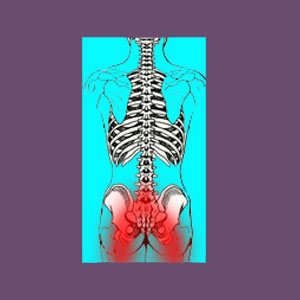
Suffering a piriformis flare-up can be an agonizing and functionally-limiting experience. These flare-ups often have known causative factors, making pain prevention efforts somewhat effective for many patients. Flare-ups might occur due to known and patterned circumstances or may victimize patients seemingly randomly, escalating the fear factor involved in their presentation.
Acute piriformis pain can be a terrible ordeal. Many people are sidelined from work, athletic activity or personal responsibilities by sudden attacks of pseudo-sciatica. When flare-ups become regular problems or fall into a chronic pattern, patients will stop at nothing to find relief and end their suffering through any means necessary.
This discussion focuses on acute flare-ups of piriformis pain. We will investigate the symptoms involved in these attacks, the reasons why they occur and the best way to prevent flare-ups from ruining life.
Piriformis Flare Up Symptoms
Some patients who suffer recurring attacks of piriformis syndrome do not have any symptoms at all in between episodes. Other patients have some degree of pain most or all of the time, but suffer an escalation of pain in regular fashion. Regardless of this, the typical symptoms of acute piriformis pain include the following expressions:
Pseudo-sciatica is the most common pain profile. Patients may experience severe pain radiating down one or both legs. Pain may be located in the upper, middle or lower legs, as well as in the feet. Some patients will have pain seemingly deep in the buttocks or feeling as if it originates in the lower hip joint.
Some patients might experience pain in the perineal region or a feeling of numbness or tightness in the deep buttocks area, especially when mobilizing or weight bearing on the affected leg(s).
The patients might suffer a reduction in physical capability in the affected leg(s) due to activity avoidance based on pain or due to actual motor deficiency.
Causes of Piriformis Syndrome Flare Ups
Flare-ups can occur for many reasons. Some of the most common exacerbating factors for piriformis syndrome include all of the following factors:
Position might contribute to flare-ups of pain, particular positions that stress the muscle or cause it to become taut for an extended time.
Similarly, positions that cause antagonistic pairing muscles to tighten for extended time periods might create tension in the piriformis as a consequence.
Athletic endeavors might exacerbate some cases of piriformis syndrome, especially when the muscle is working hard or for an extended duration.
Injury can bring on an episode of acute piriformis pain.
Mindbody ischemia is a frequent cause of recurring attacks of piriformis pain, since the motivations for symptomology exist in the subconscious and can be activated through endless psychoemotional triggers. When we observe recurring piriformis pain without obvious physical trigger, we generally suspect the condition to be psychogenic. Targeted therapy using appropriate interventions almost always confirms this suspicion.
Piriformis Flare Up Prevention
Once trigger factors can be recognized, it is possible to prevent attacks of piriformis pain in many case profiles. Evaluating why pain becomes acute under particular circumstances is key to this process. To help patients in their quest for constructive relief, we suggest the following practices:
For patients who are having pain during particular physical activities, it is best to consult with your physical therapist and ascertain why the activity is creating symptomatic activity. Typically, a functional solution can be provided using targeted stretches or exercises.
For patients who suffer positional pain, it is best to try to avoid problematic postures, especially for an extended time frame. If activity avoidance is not possible, then it may be wise to once again consult with a physical therapist to find some workaround for the position that is required, with less or no pain.
All patients, and especially those with non-patterned or unpredictable pain, must consider the very strong possibility of mindbody origin. Most chronic cases of piriformis syndrome do not have a structural basis, but instead are motivated by recurrent attacks of ischemia that causes the muscle to spasm and clamp down on the sciatic nerve. The only way to prevent these attacks is to short circuit the underlying causative mechanism in the mind. The best tool for this objective is surely knowledge therapy.





